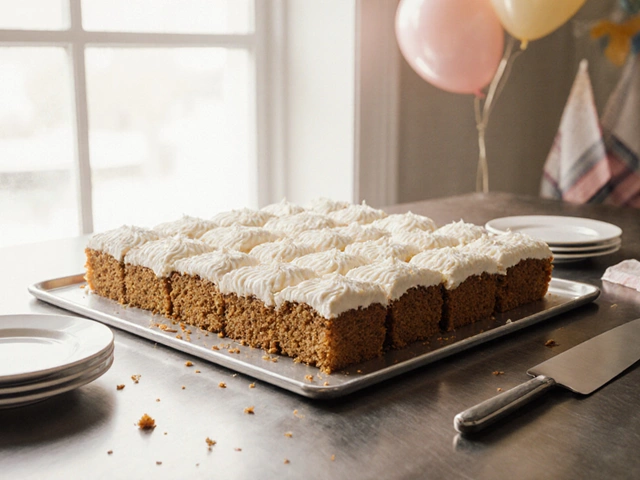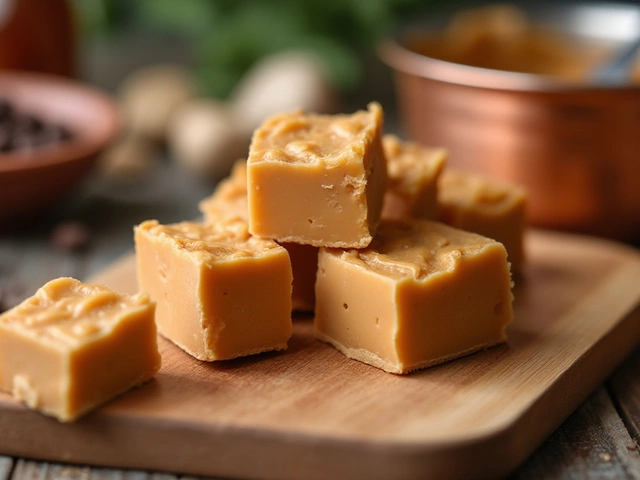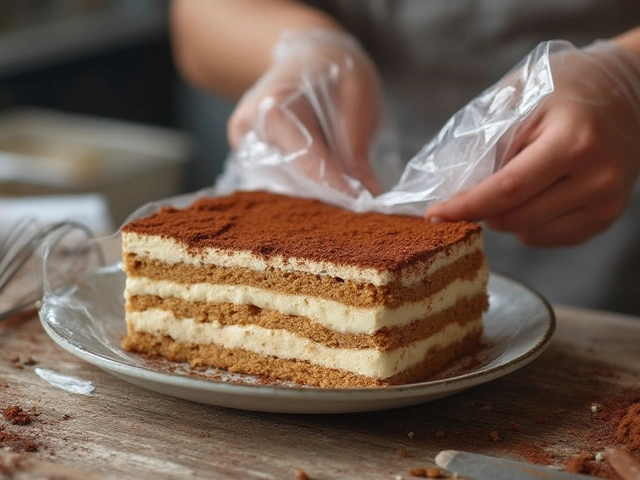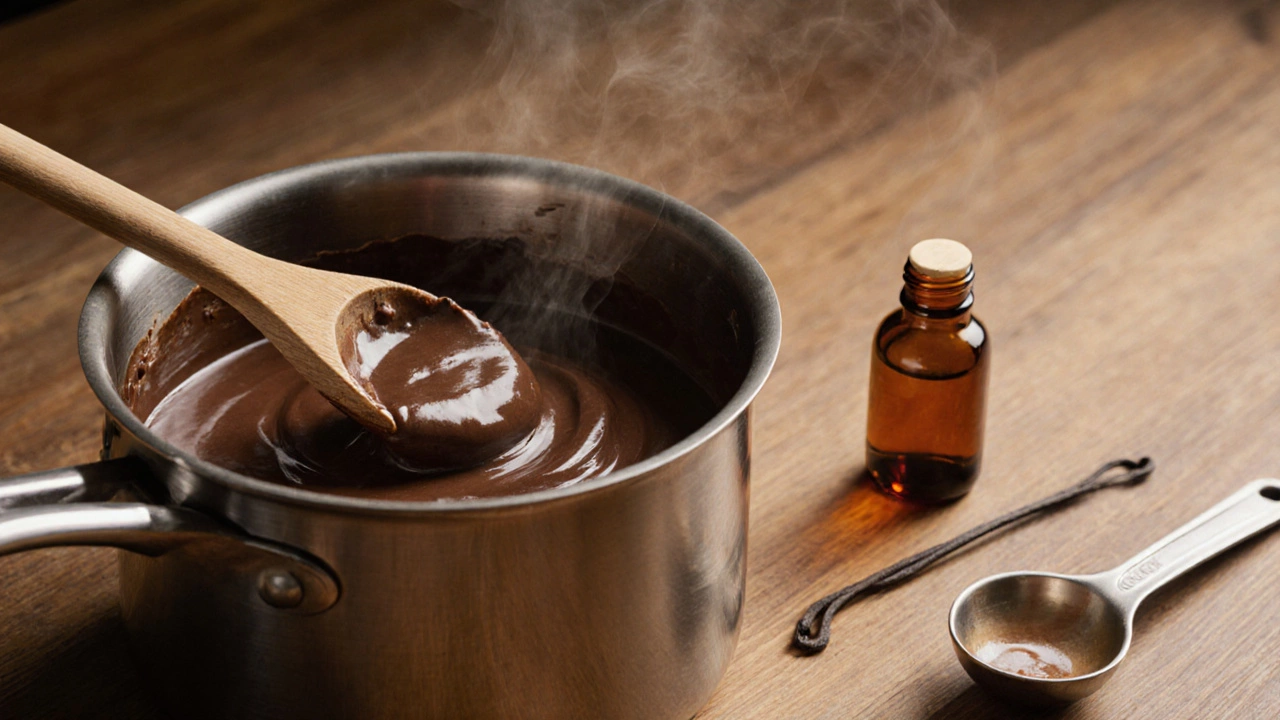
Fudge Vanilla Substitute Calculator
Need to replace vanilla extract in your fudge recipe? This calculator helps you select the best substitute and determine the proper amount to maintain flavor balance. Choose a substitute from the options below based on what you have available.
When you stir a batch of Fudge is a dense, milk‑based confection that relies on a precise balance of sugar, fat, and flavor. One ingredient many bakers assume is optional is vanilla extract. Skipping it might seem harmless, but it actually reshapes the final bite in several ways.
Quick Takeaways
- Vanilla adds aroma, rounds sweetness, and masks minor bitterness.
- Without it, fudge can taste flat and the chocolate flavor may feel harsher.
- Texture changes are subtle - the mix may set slightly firmer.
- Compensate with a pinch of salt, a splash of coffee, or a different spice.
- Follow the troubleshooting checklist if your fudge seems off.
Why Bakers Reach for Vanilla
Vanilla extract is a distilled solution of vanilla beans in alcohol. Its chemistry does three things:
- It binds with sugar molecules, softening the perception of sweetness.
- Its aromatic compounds (vanillin, p-hydroxybenzaldehyde) trigger the brain’s pleasure centers, making the confection taste richer.
- It masks the metallic edge that cocoa can develop when heated.
In a classic chocolate fudge recipe, the primary flavor comes from chocolate. However, chocolate alone can be sharp, especially if you use cocoa powder or a less‑sweet chocolate bar. Vanilla softens that edge and creates a more rounded palate.
Flavor Impact of Skipping Vanilla
When you omit vanilla, the following flavor shifts occur:
- Flat sweetness: Without vanilla’s sweetness‑balancing effect, the sugar in the fudge becomes more pronounced.
- Increased bitterness: Cocoa’s natural bitterness rises, making the fudge taste a bit harsh.
- Weaker aroma: The inviting scent that pulls you to the kitchen is largely missing, so the fudge may feel less “home‑baked.”
Professional bakers often add a dash of salt to counteract these effects. A pinch (about 1/8 teaspoon for a 2‑cup batch) restores balance without making the fudge salty.
Texture: Does Vanilla Really Matter?
The texture of fudge is governed by sugar crystallization, fat content, and cooling rate. Vanilla itself doesn’t directly alter the crystal formation, but its alcohol base introduces a tiny amount of moisture. That extra moisture can slightly lower the final set point, leaving the fudge a hair softer.
When you leave vanilla out, you might notice a marginally firmer bite. In most home kitchens the difference is subtle, but if you’re aiming for that melt‑in‑your‑mouth melt, retaining the vanilla can be the deciding factor.
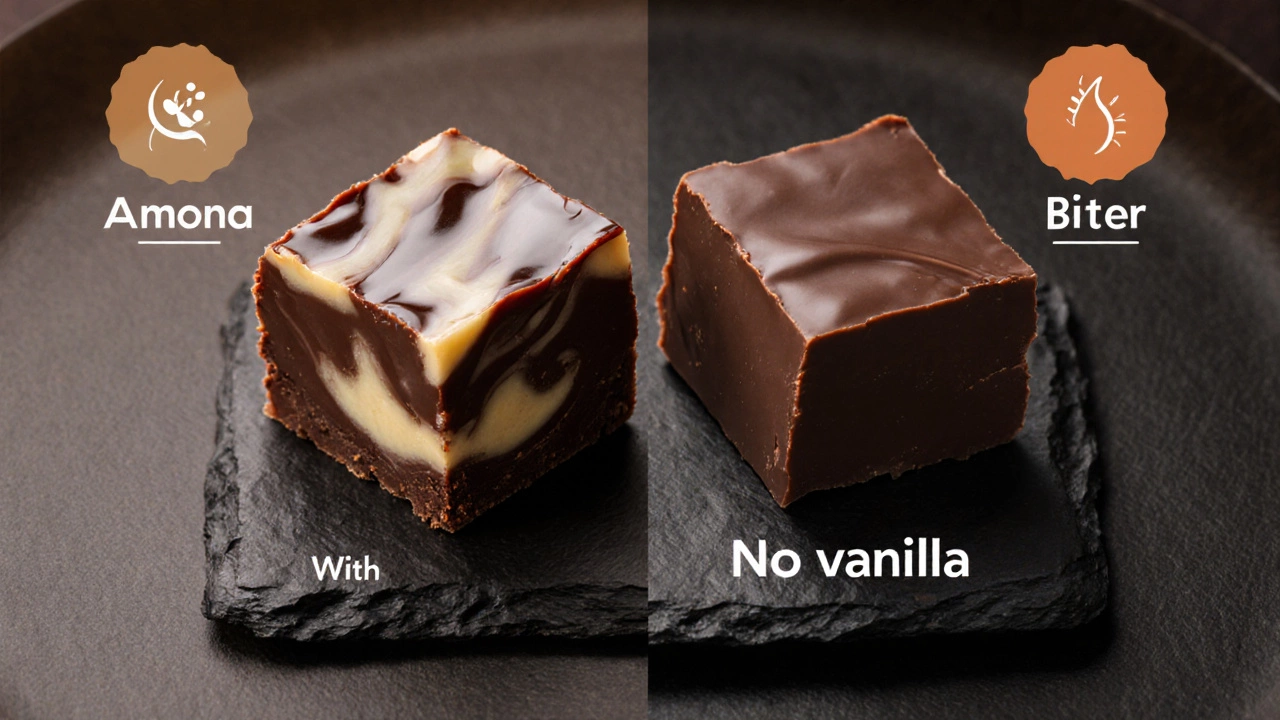
Compensating for No Vanilla
If you forget vanilla or simply don’t have any on hand, there are easy swaps that keep the fudge delicious:
| Substitute | Amount | Effect on flavor |
|---|---|---|
| Almond extract | ½ tsp | Nutty note, stronger aroma |
| Maple syrup | 1 tsp | Subtle caramel sweetness |
| Espresso powder | ¼ tsp | Deepens chocolate, masks bitterness |
| Ground cinnamon | ¼ tsp | Adds warmth, complements chocolate |
| Pinch of sea salt | ⅛ tsp | Balances sweetness, reduces flatness |
Each option adds its own nuance, so choose the one that best fits the dessert you’re serving. For the purest vanilla fudge experience, stick with vanilla, but any of these will rescue a batch that’s missing it.
Common Mistakes When Omitting Vanilla
- Over‑sweetening: Bakers often add extra sugar to compensate for flavor loss, which throws off the fudge’s texture.
- Skipping the pinch of salt: Without vanilla’s mellowing effect, the salt becomes essential.
- Using low‑quality chocolate: With vanilla gone, any flaws in the chocolate become glaring.
To avoid these pitfalls, keep the original recipe proportions, then add a small amount of one of the substitutes above.
Step‑by‑Step Troubleshooting Checklist
- Does the fudge taste flat? → Add ½ tsp almond extract or a pinch of salt.
- Is the bitterness too strong? → Mix in ¼ tsp espresso powder.
- Is the texture too firm? → Warm gently and stir in 1 tsp butter; let it set again.
- Missing aroma? → Sprinkle a dash of ground cinnamon while still warm.
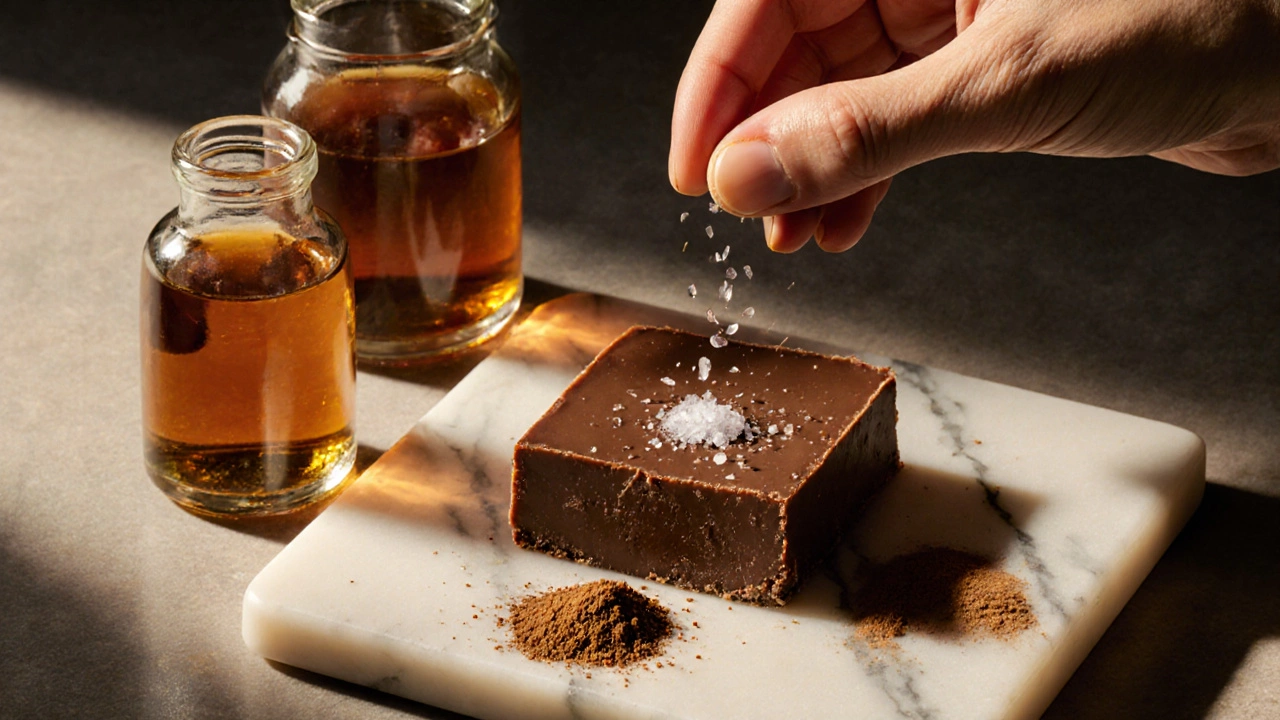
Real‑World Example: A Simple Chocolate Fudge Recipe
Here’s a baseline recipe that works whether you have vanilla or not. Follow the steps, then use the troubleshooting list if the flavor feels off.
- 1 cup (200g) granulated sugar
- ¾ cup (170g) unsalted butter
- ⅓ cup (80ml) whole milk
- 2tbsp cocoa powder
- ½ cup (90g) semi‑sweet chocolate, chopped
- ¼ tsp cream of tartar
- ¼ tsp salt
- 1 tsp vanilla extract (optional)
Heat sugar, butter, milk, cream of tartar, and salt in a saucepan over medium‑low heat, stirring until the sugar dissolves. Bring to a gentle boil, then let it simmer for 5minutes. Remove from heat, stir in cocoa, chocolate, and vanilla (if using) until smooth. Pour into a greased 8‑inch square pan, let cool to room temperature, then refrigerate for 2hours before cutting.
If you omitted vanilla, taste the warm mixture; you’ll likely notice a sharper chocolate profile. At that point, sprinkle a pinch of salt or a dash of espresso powder before pouring it into the pan.
Final Thoughts
Vanilla isn’t a “must‑have” for fudge, but it’s a low‑effort way to elevate flavor, smooth out bitterness, and give your kitchen that comforting scent. Skipping it won’t ruin a batch, but it does change the experience. Knowing the chemistry lets you decide whether to add a substitute, a pinch of salt, or simply accept the bolder chocolate taste.
Frequently Asked Questions
Can I use vanilla bean instead of extract?
Yes. Split a vanilla bean, scrape the seeds, and steep them in the milk/butter mixture. Use one bean for about two cups of fudge for comparable flavor.
Will omitting vanilla affect the shelf life of fudge?
No. Vanilla is primarily a flavor agent; it doesn’t impact microbial stability. Store fudge in an airtight container at cool room temperature for up to two weeks.
Is a pinch of salt enough to replace vanilla?
A pinch of salt balances sweetness and reduces flatness, but it won’t add the aromatic depth that vanilla provides. Pair salt with another flavor booster for best results.
Can I add a different spice instead of vanilla?
Absolutely. Cinnamon, nutmeg, or cardamom work well with chocolate fudge. Use no more than ¼ teaspoon to avoid overpowering the base flavor.
Why does my fudge taste bitter without vanilla?
Chocolate, especially when using cocoa powder, contains natural bitter compounds. Vanilla masks that bitterness. Without it, the bitter notes become more noticeable.

